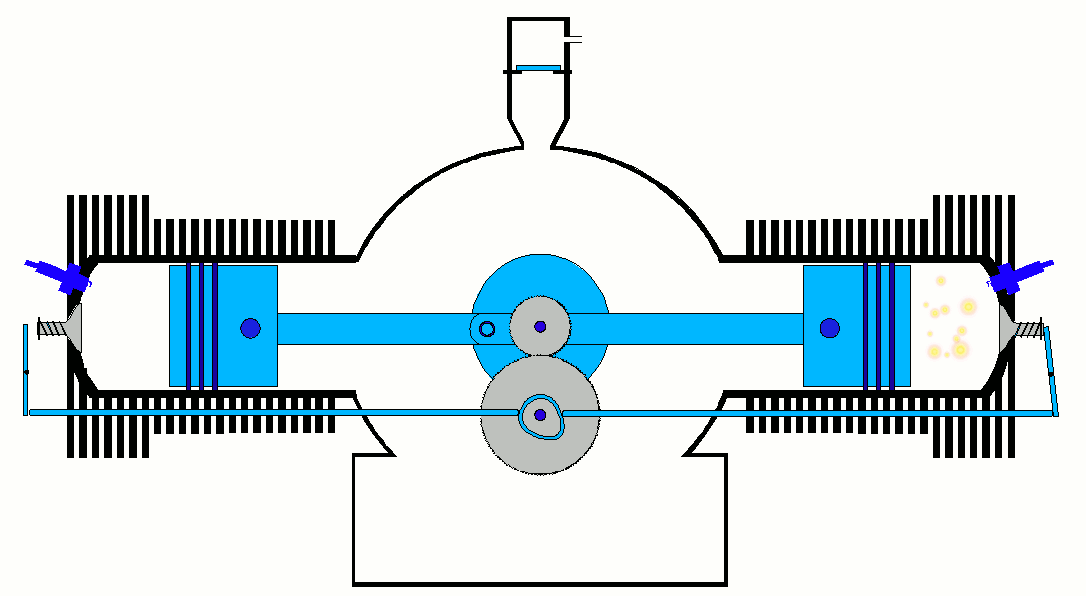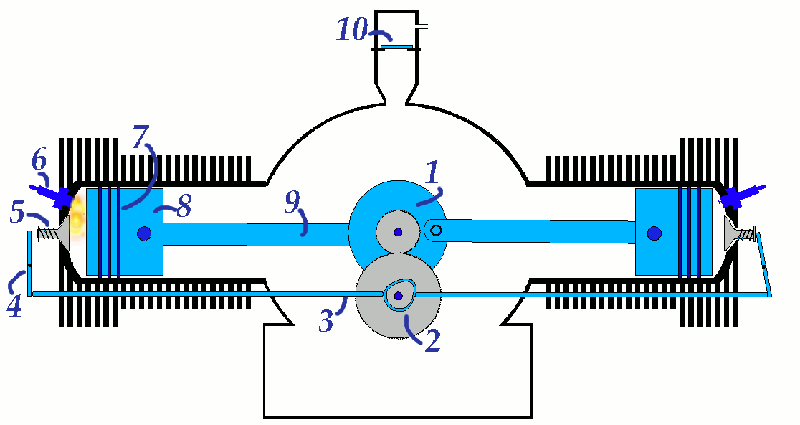|
|
|
Part 1 - Motor / Part 2 - suspension / Part 3 - Rust Flat twin engine Animation of the 2CV engine, front view. You can just see the exhaust valve. A video showing both valves will follow somewhen... Upper dead centre  (1) Crank shaft - (2) Calm shaft - (3) Push rod - (4) Rocker arm - (5) Exhaust valve (6) Spark plug - (7) Compression ring - (8) Piston - (9) Connection rod - (10) Flatter valve inside of the oil fille neck The 2CV was always equipped with an air cooled flat twin engine. Both cylinders are arranged in an angle of 180 degrees to each other, which is why thoe engines are very flat, but also very wide. Carl Benz was the inventor of this kind of engine, which he called 'contra motor'. The pistons move in and out simultaneously, which is why the those engines run very smooth. Four strokes1. Intake stroke While the piston is moving down, the intake valve opens and the air-fuel mix enters the cylinder. 2. Compression The intake valve is closed and the piston starts compressing the gas inside the cylinder while moving upwards. 3. Power stroke The air-fuel mix ist ignited by a spark. The combustion process starts at the spark plug and moves through the cylinder. The ignition spark starts before the piston is at the top dead centre, because the combustion process takes some time to reach the whole volume of the air-fuel mix. The pressure of hot gas is significantly higher than those of cold gas and so the forces acting on the walls of the containment are higher, hence the piston is driven back down to the bottom dead centre by a higher force than required to compress the fuel-air mix during stroke 2. 4. Exhaust The exhaust valve opens and the burnt gas is evacuated from the motor while the piston is moving to the TDC once again. When reaching the TDC, the exhaust valve is closed. The 2CV flat engineThe two cylinders of the 2CV engine are ignited one after the other. While the left cylinder is in power stroke, the right one is in the intake stroke. The ignition spark is generated at both cylinders while the piston is at the top dead centre. Those spark ignites the fuel-air mix at one cylinder, while the other cylinder is at the end of the exhaust stroke, which is why nothing happens inside of this cylinder. The advantage is that no distributing device is required (keep it simple). Part 1 - Motor / Part 2 - suspension / Part 3 - Rust |